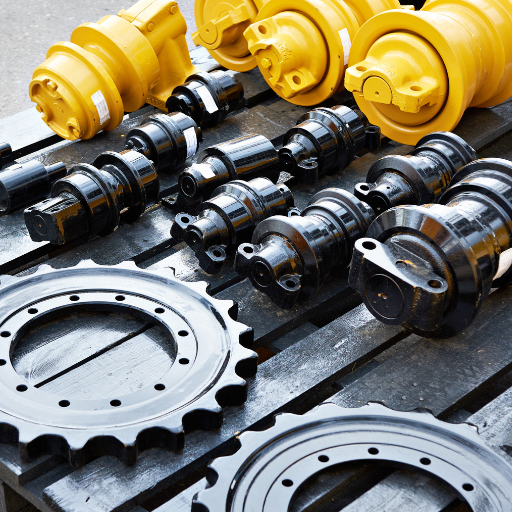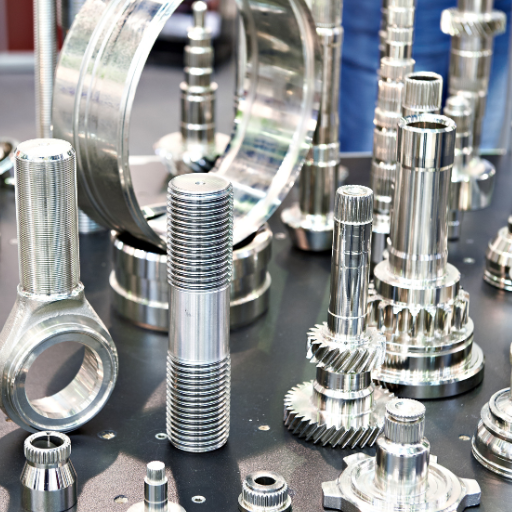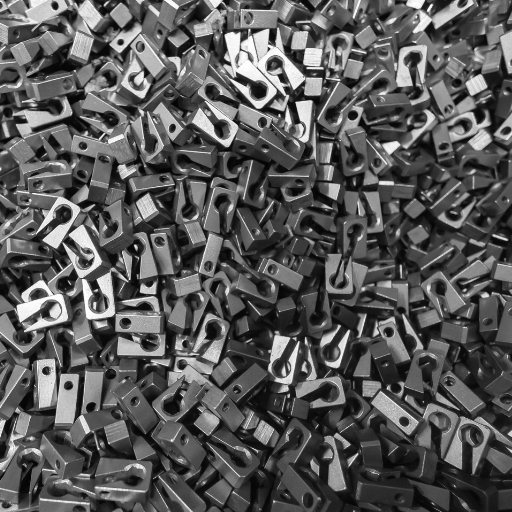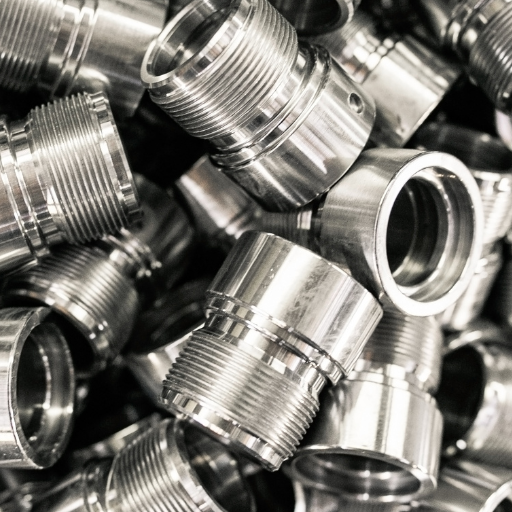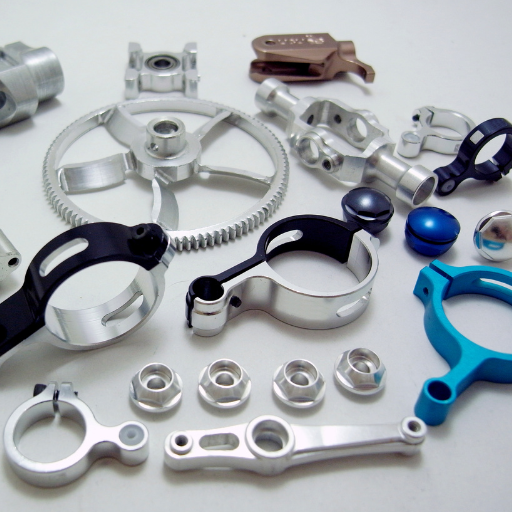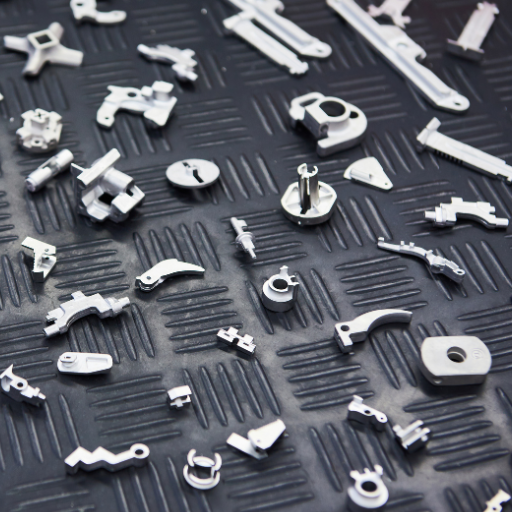Metal parts that are custom-manufactured are a critical component of many industries like automotive, aerospace and so on. In this process raw metal is transformed into a unique object made for a specific purpose hence requires creativity, accuracy and technical knowledge. For any metallic component to be made, one must have knowledge over various methods used in its making as well as the materials and techniques employed to bring out an excellent quality item. This document will cover the basics surrounding production of custom metal parts giving you tips and ideas that can simplify your understanding about it. Through proper selection of materials or understanding the right manufacturing procedures, we look forward to providing you with information that will enable you make better metal components.
Understanding the Metal Manufacturing Process
Metal manufacturing is a complicated process that follows different stages to ensure a component meets the specifications set. It starts with design and engineering where metal fabrication companies use CAD software to come up with detailed part blueprints. The next stage is material selection of the appropriate metal considering strength, durability, and corrosion resistance.
After choosing the material, there are various cutting methods involved in cutting of the raw materials into rough forms such as laser cutting, plasma cutting, and waterjet cutting. In order to attain final dimensions they go through forming processes which may include bending, forging, or extrusion. Machining operations provide greater detailing such as milling, drilling and turning.
The subsequent step is welding and joining where different parts are joined together as one unit. Furthermore, finishing procedures like grinding, polishing, coating can be used both for improving the appearance of metal components as well as their functionality. Lastly, before the product gets to the consumer quality control checks have to be done to ensure that all specs and standards have been met.
Each of these stages employs modern state-of-the-art techniques which help in producing high-end custom metal parts quickly.
Exploring the fabrication process of metal part manufacturing
In addition to the above, metal fabrication usually follows a number of very important stages. We will now present each of them along with detailed explanations and relevant data:
- Designing and Engineering
- Description: The use of modern CAD software to develop comprehensive blueprints for the desired part, guaranteeing accuracy and adherence to given specifications.
- Data: More than 90% of manufacturers use CAD systems, enhancing design accuracy by as much as 50%.
- Material Selection
- Description: It involves selecting suitable kind of metal based on its strength, durability, weight and corrosion resistance of the component.
- Data: Comprehensive properties make stainless steel be chosen in almost half applications.
- Cutting
- Methods: Laser cutting, plasma cutting, waterjet cutting.
- Description: Uses accurate machines to turn raw material into crude forms.
- Data: Laser cutting is able to achieve tolerances up to ± 0.005 inches thus improving greatly on accuracy.
- Forming Processes
- Techniques: Bending, forging, extrusion.
- Description: The metal takes shape in controlled conditions through deformation into final dimensions.
- Data: Strength may increase by up to three times greater if forged depending on grain alignment.
- Machining
- Operations: Milling, drilling or turning it’s done?
- Description: CNC machines add finer details to the part using other methods such as fine-tuning among others.
- Data:CNC machining can give tolerances within ±0.002 inches that are compulsory in making complex parts.
- Welding and Joining
- Methods : TIG welding , MIG welding , soldering .
- Description : Assembling different pieces into one whole unit so that integrity is maintained at all times .
- Data:TIG welding is known for its precision and has become quite popular in about 40 percent key industries .
- Finishing Processes
- Ways : Grinding; polishing; coating .
- Description : It makes metal components look better while removing flaws and putting additional layers on them .
- Data:Around 70 percent of metal parts undergo different finishing processes to ensure their quality and durability.
- Quality Control
- Methods : Inspection , testing, certification .
- Description : They ascertain that all parts are as per the required standards before they get to the end user.
- Data:Quality control can bring down defect rates to less than 1% using advanced techniques.
A detailed attention on these stages of fabrication makes it possible for manufacturers to produce customized metallic pieces with precision, excellence and high productivity.
Unlocking the Potential of Custom Metal Parts
These metal components are one of the most flexible and customizable parts on earth, making their presence indispensable in sectors such as aerospace and healthcare. The advent of advanced manufacturing technologies, like CNC machining and additive manufacturing, has completely transformed the way these parts are made. With its high precision and repeatability for producing complex geometries and tight tolerances in custom metal parts, CNC machining is widely used meanwhile additive manufacturing or 3D printing allows for quick prototyping of elaborate intricate designs that would be difficult with traditional methods.
As a result, this boosts the production cost of companies. An organization can use digital design tools to iterate designs rapidly thereby ensuring optimal performance and functionality before mass production takes place. This means faster product development cycles coupled with higher degrees of product innovation as well as customization capabilities.
This article also highlights material selection which is another key aspect where custom metal parts come out clearly. Stainless steel, aluminum alloys etc., can be chosen by engineers depending on specific properties that have been tailored to fit individual application requirements. This guarantees that the end product will meet its strength, durability and performance parameters necessary for its purpose. Furthermore, small-sized economic orders make custom metals ideal solutions in certain specialized applications where traditional ways of mass production cannot be adopted economically.
Therefore, taking maximum advantage from using these technologies rests on using high-tech materials simultaneously to achieve optimum design flexibility efficiency superiority. The exact demands of various industries are thus met through this symbiosis while at the same time promoting innovative trends that give them an edge in competitive global markets right now having a fast paced industrial system.
The art of creating custom metal parts for specific manufacturing needs
Advanced computer-aided design, careful engineering, and intricate manufacturing methods are the steps involved in the making of custom metal parts. CAD (Computer-Aided Design) programs are initially used by engineers to come up with complex designs which conform to specific performance requirements, then these designs are converted into CAM systems that guide the machinery for fabricating the parts. Depending on specifications ,a number of techniques such as CNC machining, metal 3D printing, or casting may be employed to create raw materials into final components.
Material choice is key and depends on the demand of application; examples include aluminum, stainless steel titanium etc. Each type is selected because it has unique properties like strength, corrosion resistance or thermal stability. The processes applied in production often involve a variety of operations such as cutting, forming and finishing to ensure that finished products meet strict quality standards.
Quality assurance must be maintained throughout the entire process employing dimensional inspection, material tests and evaluation of surface finishes in order for them to meet specified tolerances as well as perform according to set performance metrics. Production of custom metal parts makes use of cutting-edge technology thus guarantees high precision capability, efficiency and flexibility which allows them fit seamlessly into a client’s particular applications.
Innovations in Metal 3D Printing
Various metal 3D printing technologies have been introduced, which enhance its precision and efficiency as well as widen the scope of using it in different fields. The recent progressions include additive manufacturing focused alloys with improved mechanical properties and thermal stability. These high-speed printing methods are characterized by reduced production time while attaining print accuracy and complexity due to employment of binder jetting or laser powder bed fusion. Also, real-time monitoring devices for adaptive control systems have been incorporated into the printing process to achieve uniformity in quality and reduce defects occurrence. Besides, advanced post-processing techniques such as heat treatment and surface finishing are currently being optimized for enhancing the performance of 3D-printed metallic components. Such innovations enable highly sophisticated and personalized parts that meet strict industrial requirements thus positioning metal 3D printing as a beneficial technology in aerospace, automotive, medical, and other high-performance sectors.
Direct Metal Laser Sintering: Shaping the future of metal part manufacturing
The Direct Metal Laser Sintering (DMLS) has ushered a new era in the production of high-precisioning metal parts through taking advantage of an additive manufacturing approach per layer. This method uses a powerful beam of light to bond together particles of powdered metal without going through any molding or casting stage, thereby generating objects right from digital designs.
- Precision and Accuracy: When it comes to precision DMLS is known for its exceptional accuracy with tolerances typically being around ±0.1 mm. It is capable of producing complex internal structures along with intricate geometries that traditional ways of making cannot achieve.
- Materials: Stainless steel, titanium, aluminium, cobalt-chrome and Inconel among other metals can be used in DMLS because it supports many metal alloys. Different materials give varied attributes hence making DMLS applicable across multiple sectors like aerospace industry; medicine; automobile sector; as well as industry.
- Build Volume: A typical DMLS machine has a build volume ranging from 250 x 250 x 325 mm to 400 x 400 x 400 mm, but other larger machines are available depending on the manufacturer.
- Layer Thickness: For example, in DMLS layer thickness varies between 20-100 µm depending on the specific machine and material used. Using thinner layers improves surface finish and increases resolution of detail.
- Mechanical Properties: Parts made using this technology have mechanical properties that are equal or sometimes better than those of conventionally manufactured ones. These properties can be further improved by post-processing treatments like heat treatment which enhances tensile strength, hardness, fatigue resistance etc.
- Production Speed: The build speed is affected by factors such as part geometry, material and layer thickness. On average, parts using DMLS technology take a short time to be produced hence good for rapid prototyping and small to medium batch production.
- Surface Quality: Ra roughness average is usually within the range of 5-10 µm for most surfaces of DMLS parts. Other post-processing techniques including machining; abrasive blasting; and mechanical polishing may also be used to achieve even finer finishes
- Efficiency: Material waste in DMLS is much less compared with subtractive manufacturing methods. It is also environmentally friendly due to increasing speeds that result from energysaving practices.
- Applications: Due its versatility it finds application in customised medical implants; aerospace components; performance automotive parts among others even intricate industrial tools. This supports lightweight yet strong structures which enhance performance improvements in these sectors.
- DMLS offers the potential for cost savings in terms of material efficiency and reduced lead times for complex parts, despite the relatively high initial setup and material costs. As such it can be used as a more economical option for DMLS when making products with low volume but high value.
By constantly changing and adapting to new developments, Direct Metal Laser Sintering is shaping the future of metal part manufacturing due to its ability to precisely produce personalized and extremely efficient items.
Benefits of creating complex structures through metal 3D printing
When it comes to developing intricate structures, specifically Direct Metal Laser Sintering (DMLS), metal 3D printing has an edge over other methods by allowing designs that are not possible using conventional means. First, this technology enables the formation of highly intricate designs including internal features that have been impossible before. In addition, DMLS reduces waste in terms of materials used as it builds up parts one layer at a time using only what is needed. This meticulousness also contributes to having good surface finishing and therefore diminishing much post-processing requirements. The technology can also reduce production timelines which make it suitable for rapid prototyping or small batch productions. On a whole, metal 3D printing is flexible, effective and inexpensive when it comes to manufacturing complicated high-performance components.
Comparing traditional fabrication techniques with metal 3D printing options
After comparing traditional fabrication techniques with different additive manufacturing technologies like metal 3D printing I realize both methods have merits which make them attractive in certain respects. Traditional fabrication methods that include casting, machining, forging among others have always been known for making strong products that are considered reliable especially in mass production situations. It has established processes for developing large homogeneous components together with set costings structure.
In contrast, metal 3D printing such as Direct Metal Laser Sintering (DMLS) works best where there is need for geometrical complexity, customization and minimal wastage of materials involved. Direct Metal Laser Sintering for DMLS further allows for complex inner features and intricate designs that are hard to produce using the conventional methods. Additionally, this technology plays a huge role in boosting prototyping times by enabling quick iterations and reduced time-to-market. 3D printing may have higher material costs, but its overall efficiency and lower post-processing requirements make it more cost-effective for low-volume, high-value production situations. Deciding which method to employ therefore depends on project-specific factors like volume, complexity and speed of production.
Sheet Metal Fabrication: A Vital Component of Metal Manufacturing
The metal manufacturing industry relies heavily on sheet fabrication which is the production of different structural and functional parts. In this process, single layers of metals are cut, bent or joined in order to produce automotive, aerospace, consumer electronics or construction components. The wide range of applications for sheet metal fabrication also includes mass production as well as specialized designs according to preferences. The accuracy, effectiveness and scalability of this manufacturing method have been greatly improved by such advances as laser cutting and CNC machining plus automatic bending machines. In general, versatility makes sheet metal fabrication a must-have since it can be customized or manufactured in large quantities and still remain useful due to its durability and flexibility in meeting contemporary engineering standards.
Steps involved in the sheet metal fabrication process
- Designing: The first step involves creating a detailed design using CAD (Computer-Aided Design) software. This design acts as a blueprint for the entire fabrication process.
- Cutting: Once the design is finalized, the metal sheets are cut into the required shapes and sizes. Common methods include laser cutting, water jet cutting, and shearing. Laser cutting provides high precision, with a typical tolerance of ±0.002 inches.
- Punching: For creating holes and specific shapes, punching machines are used. This process ensures that the holes are cleanly cut and precisely positioned according to the design specifications.
- Bending: After cutting, the metal sheets are bent into the desired angles and shapes using press brakes or automated bending machines. Typical parameters include a bending tolerance of ±0.5 degrees and a minimum bend radius based on the material thickness.
- Assembling: The bent and shaped parts are then assembled to form the final product. This may involve welding, brazing, riveting, or using fasteners to join the pieces together. The choice of method depends on the material and strength requirements.
- Finishing: To enhance the appearance and durability, finishing processes such as painting, powder coating, anodizing, or galvanizing are applied. These coatings provide corrosion resistance and aesthetic appeal.
- Quality Inspection: Rigorous quality control checks are performed at various stages to ensure that the components meet the required specifications and standards. This may involve dimensional inspections, material testing, and functional testing.
- Packaging and Shipping: Once the parts have passed inspection, they are packaged securely to prevent damage during transit and shipped to the customer or the next stage of assembly.
These steps, supported by advanced machinery and software, ensure that sheet metal fabrication meets the high-precision demands of modern engineering applications.
Advantages of Sheet Metal Fabrication for Custom Parts
- Versatility: Sheet metal can be easily cut, bent, and shaped into a variety of complex forms, enabling the creation of bespoke designs tailored to specific requirements.
- Strength and Durability: Custom sheet metal parts are known for their strength and resilience, withstanding high stresses and harsh environmental conditions.
- Cost-Effectiveness: Advanced fabrication techniques and automation can lead to significant cost savings, especially for large production runs.
- Precision: Modern fabrication machinery ensures high precision and tight tolerances, which are critical for engineering applications.
- Quick Turnaround: The efficiency of the fabrication process allows for faster production times, ensuring that custom parts can be delivered promptly.
- Material Options: A wide range of materials, including steel, aluminum, and copper, can be used, offering various properties to suit different applications.
- Scalability: Whether you need a single prototype or a large batch, sheet metal fabrication can scale production to meet your needs.
These advantages make sheet metal fabrication a robust choice for producing high-quality, custom-engineered parts.
Designing for Sheet Metal: Best Practices
- Material Selection: Selecting the right material is crucial. Each material, whether it’s steel, aluminum, or copper, has distinct properties that influence the final product’s performance and durability.
- Bend Radii: It’s important to design with appropriate bend radii to avoid cracking and to maintain structural integrity. Standardizing bend radii across parts can also simplify manufacturing.
- Hole and Slot Placement: When placing holes or slots, maintaining a minimum distance from edges and other features prevents deformation and ensures part strength.
- Tolerances: Design with realistic tolerances. While modern fabrication processes are precise, setting overly tight tolerances can drive up costs and complicate production.
- Consistent Thickness: Using a consistent material thickness throughout the design helps in achieving uniform bends and reduces complications during fabrication.
- Minimizing Complex Features: Simplifying complex features or avoiding their overuse can lower costs and reduce the likelihood of production errors.
- Tab and Slot Construction: Incorporating tabs and slots in the design can aid in self-alignment during assembly, improving both precision and ease of construction.
- Surface Finish Considerations: Specify required surface finishes early in the design process to ensure the appropriate fabrication steps are followed.
- Tool Access: Ensure that your design allows sufficient access for fabrication tools, which is critical for efficient manufacturing.
- Prototyping: Creating prototypes and iterating on the designs can help catch potential issues early and refine the design for better manufacturability and performance.
By following these best practices, I can optimize my designs for sheet metal fabrication, ensuring high quality and efficiency in production.
Delving into Metal Injection Molding (MIM): A Comprehensive Look
Metal Injection Molding (MIM) combines the best of plastic injection molding with the strength and integrity of metal. Polymer binder is mixed with metal powder to form a feedstock in this new process. This feedstock is then injected into a mold producing a ‘green part’ subsequently debound to remove the binder. Sintering is the last step where temperatures are increased to very high levels resulting in a solid, dense metallic component.
Advantages of MIM
- The possibility of creating complex geometries is a special advantage of MIM since the manufacture of such shapes would be difficult or nearly impossible using traditional metalworking technologies.
- Materials for All: in MIM, various metals and alloys are applicable including stainless steels, titanium and complex alloys.
- Reduced operational costs on high production volumes: when compared to other methods of production, injection molding has higher initial setup costs but it gets cheaper as production volume increases due to efficiency and reduced waste.
- Great Accuracy: with great accuracy and good surface finish many secondary machining operations could be avoided.
Applications
MIM is extensively used across various industries including automotive, medical devices, consumer electronics, and aerospace. Common products made through MIM include gear components, medical instruments, electronic device casings, and intricate mechanical parts.
By leveraging the intricacies and benefits of MIM, manufacturers can produce high-quality, complex components that meet stringent industry standards.
The process and advantages of metal injection molding
I gathered crucial insights into both the process and advantages of metal injection molding, which I’ll outline concisely below.
Process:
- Feedstock Preparation: Combining metal powder with a polymer binder to create a mixture known as feedstock.
- Injection Molding: This feedstock is injected into molds to form the ‘green part’.
- Debinding: Removing the binder through thermal or solvent-based methods, resulting in a ‘brown part’.
- Sintering: Heating the debound part at high temperatures (typically between 1100°C and 1400°C) to achieve densification and final part properties.
Advantages:
- Complex Geometries: MIM allows the fabrication of parts with intricate shapes that are generally challenging to manufacture using conventional methods. This enables the production of components with complex internal features or fine detailing.
- Material Flexibility: The technique is compatible with a variety of metals and alloys, such as stainless steel, low-alloy steels, titanium, and cobalt-chromium, enabling the selection of materials based on the specific application requirements.
- Cost Efficiency for Large Batches: Despite higher initial setup costs, MIM becomes cost-effective for large-scale production due to its efficiency, material conservation, and minimal machining requirements.
- High Precision and Surface Finish: The process can achieve tight tolerances (often within ±0.3%) and excellent surface finishes (with roughness values as low as Ra 1.6 µm), reducing the need for further machining and polishing.
Based on these findings, MIM stands out as a versatile and efficient manufacturing process especially suited for the high-volume production of complex, high-precision metal parts.
Comparing MIM with traditional metal part manufacturing
I found that MIM offers several distinct advantages compared with traditional metal part manufacturing methods such as machining and casting. Firstly, MIM makes it possible to create highly complex geometries that would be difficult or impossible using regular approaches. While MIM uses less material and is cost-effective for large production runs, conventional machining typically involves significant material wastage and higher costs on complex parts.
Moreover, MIM allows a wider range of metals and alloys than many traditional methods offer for more material flexibility. This is important in the manufacture of parts with specific mechanical properties. Further still, precision is achieved through MIM which results into an excellent surface finish thus there is no necessity for secondary operations like machining or polishing often necessary in traditional manufacturing techniques. In spite of these benefits, where small volumes of products are required or simple geometries are involved, traditional methods may still be suitable since the initial setup costs associated with MIM may not make economic sense when contrasted to other options available. According to information from top resources, it can be inferred that in terms of accuracy, material utilization and overall cost benefit analysis on high-volume production of complex items, the superiority goes generally towards MIM.
Applications and industries benefiting from MIM technology
Metal Injection Moulding (MIM) technology is used in a wide range of industries due to its ability to manufacture intricate and high accuracy parts efficiently. The automotive industry benefits from MIM by making gear parts, fasteners and turbocharger vanes that require both high strength as well as precision. In surgery, manufacturing such things as orthodontic brackets, implantable devices and surgical instruments relies on MIM because of its compatibility with biocompatible materials and the requirement for miniaturization.
The electronic industry uses MIM to make connectors, casings and components that often call for tight tolerances ad complex shapes. Additionally, the firearms industry depends heavily on MIM for producing triggers, hammers and other small precise parts which ensure dependability and consistency. For this reason aerospace sectors apply MIM for lightweight tough components like turbine blades or fasteners that need materials suited for high performance functions. Finally, consumer products also benefit from such applications especially in hand tools’ production, sporting goods and high end watches where aesthetics are more important than anything else. Its various application areas demonstrate how versatile it is thus emphasizing its economic importance.
The Role of CNC Machines in Metal Part Manufacturing
Metal parts manufacturing for instance, cannot be done without CNC (Computer Numerical Control) machines as they allow the process to take place with high precision, repeatability and efficiency. These machines employ computer-aided design (CAD) technology that controls the machine tools in machining accurately creating intricate metal parts with tight tolerances. In addition, CNC machining frees the process from human error, guarantees uniformity of quality and allows for mass production thus it is indispensable in industries making complex, high-performance products. In aerospace, automotive, medical and electronics sectors among others there is heavy reliance on CNC machines that are used in production of engine components, surgical implants; electrical connectors and intricate housings. As seen here the importance of CNC technology in current metal part manufacturing can hardly be overestimated because it provides flexibility speed and accuracy.
Understanding what CNC milling means for metal parts
CNC milling is one specific type of CNC machining which engages rotary cutters to do away with material from a workpiece thereby producing precise shapes and features as per the specifications required. The major benefit of this technique is that it can make highly sophisticated or complicated components using very accurate tolerances that are essential in order to meet performance requirements. In addition, by automating repetitive tasks CNC milling significantly increases productivity while improving consistency too. With advanced software I can easily convert my digital models into physical ones since these reduce lead times by minimizing human errors. Moreover the adaptability of this method allows me to operate on different substances ranging from polymers even metals serving a wide range of industrial needs. All said and done modern metal part production would never be complete without CNC milling due to its output being dependable yet at a higher level.
Customization of metals by use of CNc machines
Creating custom metal parts using CNc machines involves various fundamental stages starting with designing a part using CAD (Computer-Aided Design) software where exact measurements together with specifications are outlined . A CAM program is obtained from the digital blueprint which is responsible for providing CNC machines with a format of the instructions. This machine is equipped with several cutting tools that carefully follow these instructions to create the metal part by cutting it out of a workpiece made of metal. As such, this method guarantees high accuracy and reproducibility as well as producing complex geometries that would be difficult to make manually. Besides, CNC machines are versatile enough to deal with different kinds of metals including steel, titanium, brass and aluminum among others required for diverse applications in industry. For each component quality control is essential and all parts go through rigorous inspection so that they can meet desired standards only. Ultimately, custom metal parts production using CNC machining proves to be an extremely efficient and accurate way of manufacturing.
Combining CNC machining with other manufacturing methods
To optimize results I combine various manufacturing techniques including CNC machining depending on their individual merits. A good example is combining precision machining together with flexible additive techniques which includes 3D printing through integrating this kind of technology into my workflow thereby fabricating complex components and structures . In some cases, I also blend laser or waterjet cutting processes with CNC milling in order to increase efficiency as well as precision especially when working on different materials or intricate design projects. Consequently this approach not only enhances production capability but also reduces both time taken and cost incurred during operations. Thus, by using multiple fabrication methods strategically; I am able to supply custom-made goods complying with specifications stipulated by customers and relevant industrial standards alike
From Concept to Creation: The Journey of a Custom Metal Part
Design of custom metal parts usually starts in a conceptualization phase that consists of making sketches and the initial drafting using the CAD program. When this design is decided upon, it moves to prototyping phases often taking advantage of 3D printing or rapid prototyping methods that come up with physical models. These prototypes assist in visualizing the final product and this may lead to some adjustments before engaging into full-scale production. Material choice comes next based on strength, weight, cost related concerns as well as programming of CNC machines to get desired dimensions by implementing specific coordinates. Other manufacturing processes like machining operations including CNC milling or turning are done with much care. Post machining steps such as surface treatment, coating and quality check allow compliance of portion under question with desirable specifications and standards set by industry players. Packaging plus logistics are scheduled thus enabling delivery of finished custom metal components to their purchasers/couriering customers who desire them fully fit for use.
Design Considerations for Manufacture Metal Parts
In designing any metal part there are several considerations that must be made so as to ensure optimum performance as well as manufacturability. One of these aspects which I look at first involves material selection. The chosen material needs to have appropriate mechanical properties like tensile strength, hardness and ductility required so that it can function properly when subjected to operational stresses among others. For example, the utilization high-strength alloy steel or lightweight aluminum may significantly influence its functions as well as survival.
Another important aspect is the shape/geometry a component takes after its design process is over. Complex geometries may require advanced machining techniques and can increase production time Therefore my objective is to reduce complexity in designs without sacrificing functionality where possible Detailed CAD simulations help me identify areas like stress concentration or deformation problems which sometimes necessitate design alteration for better manufacturability.
Also tolerance requirements play a significant role too .Narrow tolerances can be indispensable in parts which need great precision but they also contribute to the production difficulty and cost. I normally use statistical data as well as experience from previous projects in order to set realistic tolerances levels that balance on precision versus cost. For example, relying on ±0.1 mm tolerances for critical dimensions while allowing looser tolerances for less critical aspects has proven efficient.
Surface finish requirements are another area that demands attention. Different applications may necessitate specific surface textures, such as smooth finishes for parts involved in fluid dynamics to reduce friction, or rougher finishes for components that require better adhesion for coatings. The appropriate finishing processes like anodizing, electroplating, or bead blasting help achieve the desired surface characteristics.
Lastly is the scale of manufacturing and scalability which ensure productive production process is followed. In cases involving prototypes or low volume runs, CNC machining would be my option because it is flexible and rapid compared to other methods. On opposite end, die-casting or metal injection molding may be worthwhile investments given their potential to reduce per part costs in high-volume productions. By incorporating these into design stage, I am able to produce metal parts that are not only durable but also affordable thus becoming highly economical.
Transforming Metal Sheets into Complex Components
The process of transforming metal sheets into complex components involves several critical steps each leveraging advanced technologies and precision techniques to achieve the desired outcome Initially sheet metal fabrication starts with material selection—choosing appropriate type and grade of metal based on its required strength, durability among other properties .Common materials are aluminium , stainless steel ,brass .
The subsequent procedure is cutting, using methods like laser cutting, plasma cutting or water jet cutting to form metal sheets with accuracy. This is an advantageous process due to its ability in producing complex designs while minimizing wastage.
After cutting, forming of the metal sheets takes place through bending, stamping or punching. These methods shape metal into required forms while maintaining the structural integrity of the material. Computer-Aided Design (CAD) software often guides these processes ensuring high accuracy and repeatability.
Therefore, fabricated parts are assembled using welding and joining techniques such as TIG welding, MIG welding or adhesive bonding. The choice of each method depends on the type of material involved and what it will be used for eventually.
Finally, surface finishing that includes powder coating, plating or anodizing is done to improve durability and aesthetics of components. Such finishes also offer extra protection against wear and corrosion.
By integrating these steps together with leveraging the modern technological advancements in place one can turn metal sheets into highly intricate and practical complex parts applicable to a wide range of applications from automotive components and aerospace parts among others.
Reference sources
- Protolabs
- Source Link: Metal Fabrication: A Guide to Manufacturing Metal Parts
- Summary: Protolabs offers an extensive guide on metal fabrication, covering material properties and various manufacturing processes such as machining, molding, and 3D printing. The guide provides precise and comprehensive information beneficial for understanding the complexities involved in producing high-quality metal parts.
- Xometry
- Source Link: Metal Parts Manufacturing
- Summary: Xometry provides a detailed overview of custom metal parts manufacturing, discussing the importance of understanding materials, manufacturing processes, and use cases. This resource is valuable for engineers and designers seeking to determine appropriate methods for creating custom metal components.
- Peko Precision
- Source Link: Metal Parts Manufacturing: 3 Key Considerations
- Summary: Peko Precision highlights three critical considerations in metal parts manufacturing, including material selection, process optimization, and quality control. This article serves as an authoritative source for achieving the best possible results in metal component production through meticulous planning and execution.
Frequently Asked Questions (FAQs)
Q: What are the key considerations when choosing a metal material for custom metal parts manufacturing?
A: When selecting a metal material for custom parts manufacturing, key considerations include the part’s intended use, the required strength and durability, resistance to corrosion and temperature, as well as cost. Understanding the properties of different types of metal and how they react to various manufacturing services is essential in choosing the right material for metal parts fabrication.
Q: How does metal stamping fit into the manufacturing process for metal components?
A: Metal stamping is a crucial process used in the manufacturing of metal components, involving shaping metal through the use of high force to deform a piece of metal into a desired shape. It’s particularly effective for producing large quantities of smaller parts with uniformity. This method is part of a wide range of manufacturing services for metal and is applicable to both soft and harder metals.
Q: Can plastic parts be integrated with metal parts across different manufacturing processes?
A: Yes, integrating plastic parts with metal parts across different manufacturing processes is possible and common, especially in applications where the unique properties of both materials are required. For instance, metal might be used for its strength and durability, while plastic may be included for its flexibility or insulation properties. This integration requires precise coordination between the different material processing techniques to ensure compatibility and functionality of the final assembly.
Q: What are the advantages of using soft metal in your metal fabrication project?
A: Soft metals, such as aluminum or soft grades of steel, offer several advantages in metal fabrication projects. They are typically easier to cut, shape, and mold, which can reduce manufacturing time and costs. Soft metals also have good corrosion resistance and are lighter in weight, making them ideal for applications where weight is a concern. However, the choice of metal should match the specific requirements of the project, considering factors like the environment in which the part will operate and the type of stress it will endure.
Q: How do manufacturing services for metal ensure the quality of custom metal parts?
A: Manufacturing services for metal employ a variety of quality control measures throughout the manufacturing process to ensure the high quality of custom metal parts. This includes the use of precision tools for accurate measurement, inspection at multiple stages of the fabrication process, adherence to industry standards and material specifications, and conducting performance tests on the finished product. Moreover, experienced engineers and technicians oversee the manufacturing to identify and rectify any deviations from design specifications.
Q: What is the role of molten metal in metal parts fabrication?
A: Molten metal plays a crucial role in several metal parts fabrication processes, especially in casting. This method involves pushing heated metal until it becomes liquid (molten) and then pouring the liquid metal into a mold where it solidifies in the desired shape of the metal component. This is particularly useful for complex shapes that might be difficult or expensive to achieve with other metal forming methods. Casting allows for the production of components in a wide variety of shapes and sizes, from intricate pieces to large, forged parts.
Q: What types of metal manufacturing methods are used for fabricating complex shapes?
A: Fabricating complex shapes in metal parts manufacturing often requires a combination of different manufacturing processes. This includes metal stamping for detailed features, casting for complex shapes, and CNC machining for precise tolerances and finishes. Additionally, metal forming techniques such as bending, rolling, and forging can be employed to achieve specific shapes and features. Selecting the right manufacturing method depends on the complexity of the shape, the type of metal material used, and the desired properties of the final part.
Q: How do manufacturers choose the right manufacturing services for a specific metal fabrication project?
A: Choosing the right manufacturing services for a specific metal fabrication project involves several considerations, including the complexity of the component design, the required metal material and its properties, the production volume, and the budget. Manufacturers will also consider the capabilities and expertise of the metal parts manufacturer, including their experience with similar projects, their technology and machinery, and their quality assurance practices. Collaboration between the design team and the manufacturing service provider is essential to ensure the project’s requirements are fully understood and met.


